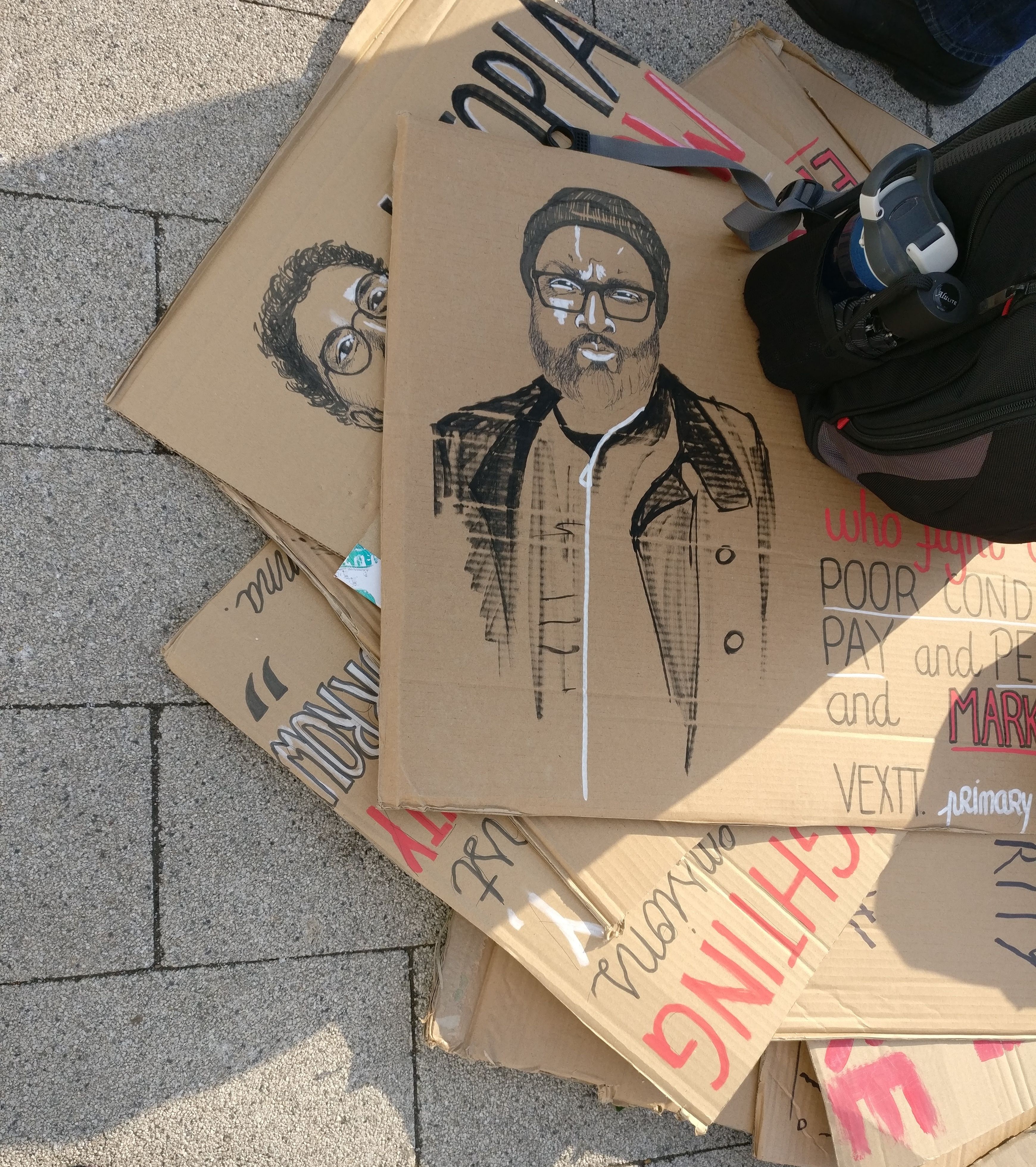The art of the strike: getting creative on the picket line
It has been a colourful few weeks on campus with the strike in full force. Amongst the official UCU signs held up by striking staff members were placards with memes on them. Cher and Stewie Griffin could be spotted advocating for fair pensions. Students got creative: a new yellow banner with purple lettering displayed the Student-Staff Solidarity Group’s logo – a fist with an arm designed to look like the Koan, with the rest of the arm showing a factory, aligning the USS conflict with industrial action of the past. Some signs were also painted to look like certain staff members.
Most entertainingly, “Will Griggs on Fire” has been re-written as “This strike’s on fire/UCU is terrified”
But art is not the only way creativity has been used during the strikes. Anyone who spotted the demonstration two weeks ago could hear versions of familiar strike chants (“Students and workers unite and fight”) but also some more creative additions. “Solidarity Forever” has been rejigged into the ever peppy “Leave your lectures, go to bed”. Most entertainingly, “Will Griggs on Fire” has been re-written as “This strike’s on fire/UCU is terrified”.
Having spent my fair share of time on the picket, I can see that this kind of creativity makes the strike accessible to me and to others. It is easier to enter on the level of humour, singing and art than an academic knowledge of the USS conflict. Chants like “When they say marketise/Casualise, we say organise”, unite the strikers and summarise in one phrase the anger felt by students and staff, although admittedly such chants gloss over some of the nuance of the staff pension conflict. The picket and demonstration are loud and disruptive. That’s the point. But as well as that, it can at least be considered pretty and cheerful.
It is easier to enter on the level of humour, singing and art than an academic knowledge of the USS conflict
The history of art and industrial action has not been ignored either. One of Free Warwick University’s first talks considered the fight against BP sponsorship in the arts. Led by Postgraduate Officer Emily Dunford with Environment and Ethics Officer Christian König, it showed examples of protest art in the British Museum and performances at the Royal Opera House and the RSC protesting the institutions’ sponsorship. For instance, a symphony performance of Romeo and Juliet was interrupted by a parody of the balcony scene. Like the UCU strikes, humour and anger are used interchangeably, if not deftly.
So what is the place of art in the strikes taking place on campus? Undoubtedly the banners make the protest more pleasing to the eye, but they also offer an important message: through art and recognisable rhetoric, the strikers have made their plight accessible to students. Everyone can find something they relate to and understand – whether it’s an in-depth knowledge of the pension restructures, or a reinvented meme.

Comments